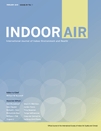We have recently just finished updating and revising our (surprisingly popular) list of all the Sloan grants under the Microbiology of the Built Environment Program. Reading through the list of projects gives a good sense of the disparate kinds of research taking place in the field.
Scared of flying? Here’s one more reason you can add to your list. There is concern about the microbiology is airplane cabins, as it is a closed environment utilizing recycled air. The occupant density is much greater than normal “built” environments, and passengers cannot leave when they want to. But not much is known about …
Just a quick note that the conference website is now live for the 3rd annual Microbiology of the Built Environment Conference in Boulder, CO on June 4-6 2014. Check it out, and if you’re a Sloan-funded participant in the program you should be able to register.
Great two-part interview with Rich Corsi from UT Austin talking about indoor air quality. If you’re the kind of person who stays in your house because you’re worried about the air quality outside… don’t listen to this interview because then you’ll have nowhere left to hide. First segment (starts at 9 minutes, 40 seconds) Second …
Bacteriophage therapy relies upon viruses of bacteria to treat bacterial infections. Prior to penicillin’s discovery, bacteriophage therapy was one of the major ways to treat bacterial infections. Virologist Felix D’Herelle pioneered this method in the late 1800’s in Paris and the former Soviet Union. Most of the literature on bacteriophage therapy is from Eastern European countries, …
According to a 2012 Environment Canada report, electricity and buildings were responsible for 25% of Canada’s greenhouse gas emissions in 2010. Designing energy efficient buildings and retrofitting existing buildings to increase their energy efficiency is a growing concern for architects. However a recent article in Environment and Energy Publishing reiterates the need to consider the microbial environment in …
A just-published article by Desroches et al, “Extrolites of Wallemia sebi, a very common fungus in the built environment,”in the journal Indoor Air describes a previously unidentified metabolite of Wallemia sebi , a very common fungus in houses worldwide, although relatively more common in north temperate climates. The authors (including David Miller) write that it …
We’ve been hearing a lot about Microbes in Space. But what about Microbes in Smog? Here in California, we know a thing or two about smog. To avoid it during the drought, we have been having a lot of Spare the Air Days lately to try to protect our air quality and reduce the amount …
Though our water undergoes many steps to become drinkable, there are many microbes that remain and have the potential to cause disease. A December study conducted in China aimed to determine the microbial compositions of water before and after treatment. This study was unique because it also sought to find the difference in microbial functions …
Continuing with blog posts about my class EVE 161: DNA sequence based studies of microbial diversity. Lecture 4 was fun and a bit scary for me. You see, I finally decided to read in detail – and cover in a course in detail – papers that claim that there are not three domains of life. Sure …
